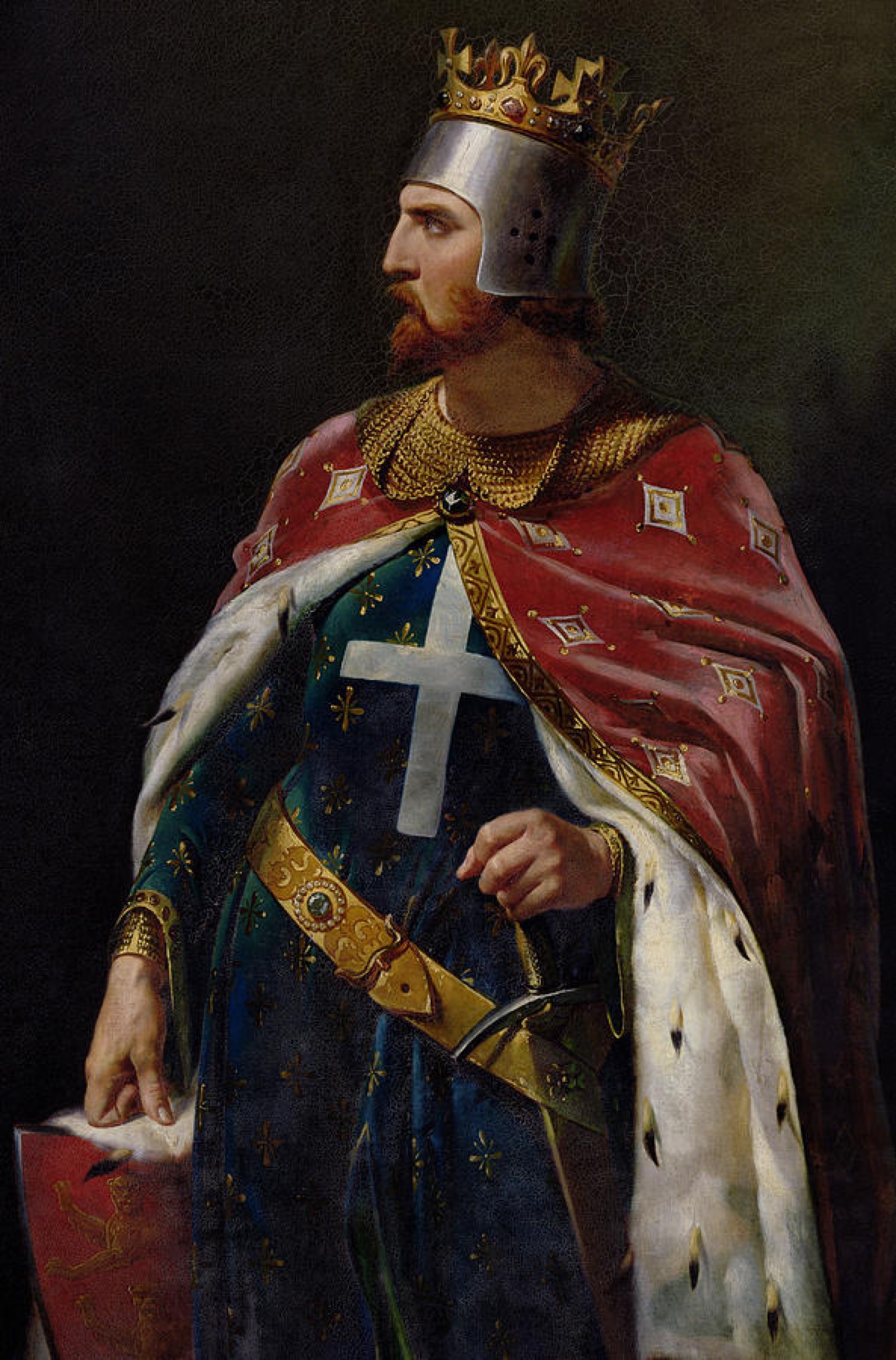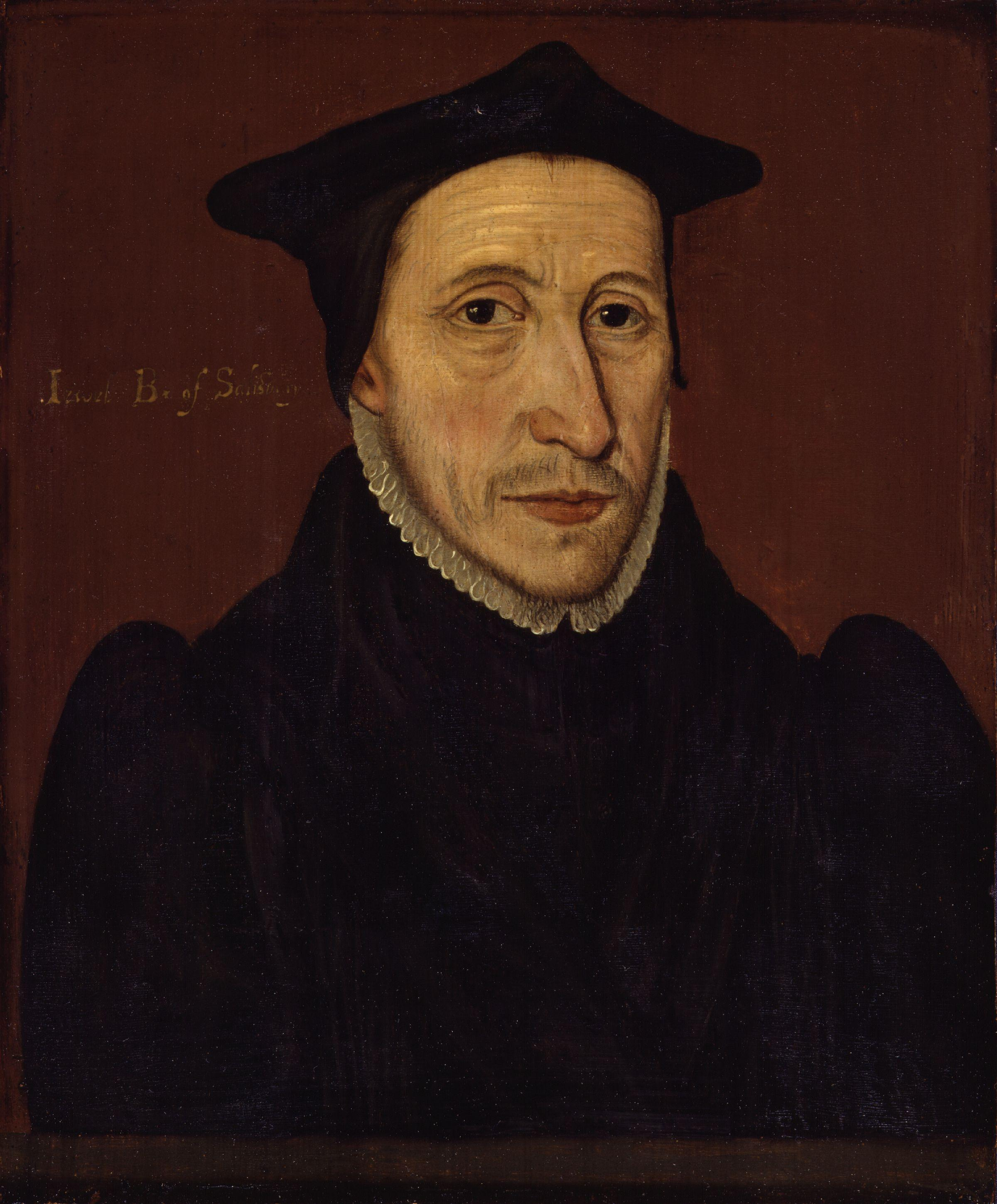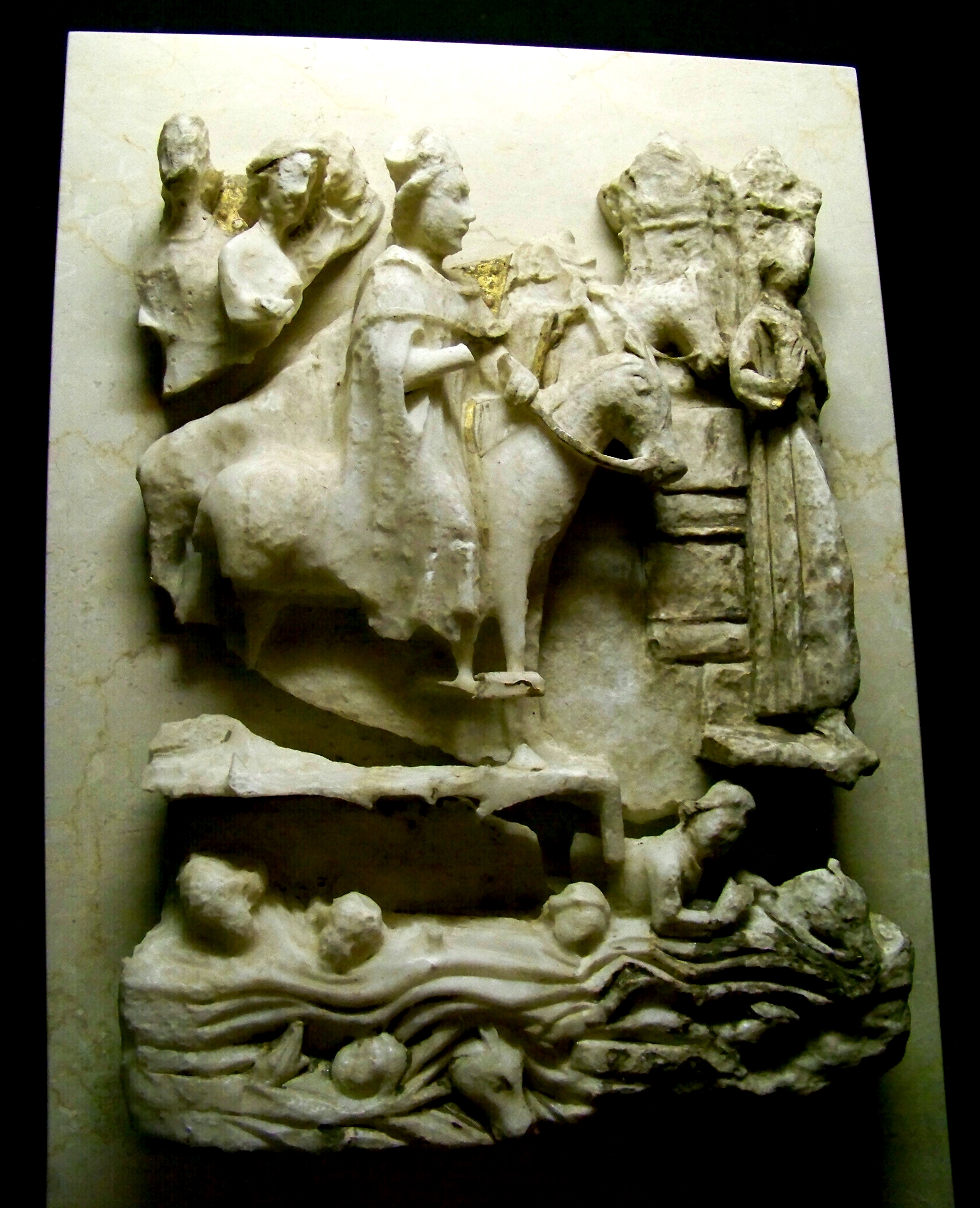|
Henry De Sully, Abbot Of Fecamp
Henry de Sully (died 1189) was Abbot of Fécamp and Bishop-designate of Salisbury and Archbishop-elect of York. Life Henry was son of William, Count of Sully, the eldest brother of Stephen, King of England and Henry of Blois, Bishop of Winchester.Davis ''King Stephen'' p. 97 Henry's mother was William's wife, Agnes of Sully, who had been attached to the household of Adela of Blois, William's mother. Although William was the eldest son of Adela and her husband Stephen, Count of Blois, he was passed over for the comital title and his younger brother Theobald became Count of Champagne on their father's death.LoPrete ''Adela Countess and Lord'' p. 216 Henry became a Cluniac monk, and was nominated in March 1140 by Henry of Blois to be Bishop of Salisbury, but the nomination was quashed.Greenway, ed., "Bishops", ''Fasti Ecclesiae Anglicanae 1066-1300''Davis ''King Stephen'' p. 44 As compensation, Henry of Blois then named Henry de Sully the abbot of Fécamp Abbey in Normandy. Later ... [...More Info...] [...Related Items...] OR: [Wikipedia] [Google] [Baidu] |
Bishop Of Salisbury
The Bishop of Salisbury is the ordinary of the Church of England's Diocese of Salisbury in the Province of Canterbury. The diocese covers much of the counties of Wiltshire and Dorset. The see is in the City of Salisbury where the bishop's seat is in the Cathedral Church of the Blessed Virgin Mary. The current bishop is Stephen Lake. History The Diocese of Sherborne (founded ) was the origin of the present diocese; St Aldhelm was its first bishop. In about 705 the vast diocese of Wessex at Winchester was divided in two with the creation of a new diocese of Sherborne under Bishop Aldhelm, covering Devon, Somerset and Dorset. Cornwall was added to the diocese at the end of the ninth century, but in about 909 the diocese was divided in three with the creation of the bishoprics of Wells, covering Somerset, and Crediton, covering Devon and Cornwall, leaving Sherborne with Dorset. In 1058, the Sherborne chapter elected Herman, Bishop of Ramsbury to be also Bishop of Sherborn ... [...More Info...] [...Related Items...] OR: [Wikipedia] [Google] [Baidu] |
Fécamp Abbey
The Abbey of the Holy Trinity at Fécamp, commonly known as Fécamp Abbey (french: Abbaye de la Trinité de Fécamp), is a Benedictine abbey in Fécamp, Seine-Maritime, Upper Normandy, France. The abbey is known as the first producer of bénédictine, a herbal liqueur based on brandy. First foundation Around 658, Waningus, a Merovingian count, founded a nunnery here, which was destroyed by the Vikings in 841. Another convent he founded in 660, near the site of the Precious Relic, was destroyed by the Vikings in 842. Around the ducal palace, the foundations of two chapels have been found. Second foundation In the 990s Richard I of Normandy, who was born in Fécamp, began the rebuilding of the church. It was Richard II who invited the zealous Saint William of Volpiano in 1001 to rekindle the life of the abbey under the Cluniac Benedictine rules. These two Norman rulers, who were originally buried outside, were later interred in 1162 by Henry II of England within the southern ... [...More Info...] [...Related Items...] OR: [Wikipedia] [Google] [Baidu] |
Year Of Birth Unknown
A year or annus is the orbital period of a planetary body, for example, the Earth, moving in its orbit around the Sun. Due to the Earth's axial tilt, the course of a year sees the passing of the seasons, marked by change in weather, the hours of daylight, and, consequently, vegetation and soil fertility. In temperate and subpolar regions around the planet, four seasons are generally recognized: spring, summer, autumn and winter. In tropical and subtropical regions, several geographical sectors do not present defined seasons; but in the seasonal tropics, the annual wet and dry seasons are recognized and tracked. A calendar year is an approximation of the number of days of the Earth's orbital period, as counted in a given calendar. The Gregorian calendar, or modern calendar, presents its calendar year to be either a common year of 365 days or a leap year of 366 days, as do the Julian calendars. For the Gregorian calendar, the average length of the calendar year ( ... [...More Info...] [...Related Items...] OR: [Wikipedia] [Google] [Baidu] |
1189 Deaths
Year 1189 ( MCLXXXIX) was a common year starting on Sunday (link will display the full calendar) of the Julian calendar. In English law, 1189 - specifically the beginning of the reign of Richard I - is considered the end of time immemorial. Events By place Europe * May 11 – Emperor Frederick I (Barbarossa) sets out from Regensburg, at the head of a German expeditionary force (some 15,000 men, including 4,000 knights). He has ensured that his lands are safe while he is away on crusade and leaves his son Henry VI in charge of the country. After leaving Germany, Frederick's army is increased by a contingent of 2,000 men led by Prince Géza, younger brother of King Béla III of Hungary. On July 27, he arrives at Niš and is welcomed by Stefan Nemanja, Grand Prince of Serbia. In order to ease his passage, Frederick makes diplomatic contacts with Hungary, the Byzantine Empire and the Seljuk Sultanate of Rum. * July 6 – King Henry II dies at Chinon, near Tours, ... [...More Info...] [...Related Items...] OR: [Wikipedia] [Google] [Baidu] |
Archbishops Of York
The archbishop of York is a senior bishop in the Church of England, second only to the archbishop of Canterbury. The archbishop is the diocesan bishop of the Diocese of York and the metropolitan bishop of the province of York, which covers the northern regions of England (north of the Trent) as well as the Isle of Man. The archbishop's throne (''cathedra'') is in York Minster in central York and the official residence is Bishopthorpe Palace in the village of Bishopthorpe outside York. The current archbishop is Stephen Cottrell, since the confirmation of his election on 9 July 2020. History Roman There was a bishop in Eboracum (Roman York) from very early times; during the Middle Ages, it was thought to have been one of the dioceses established by the legendary King Lucius. Bishops of York are known to have been present at the councils of Arles (Eborius) and Nicaea (unnamed). However, this early Christian community was later destroyed by the pagan Anglo-Saxons and t ... [...More Info...] [...Related Items...] OR: [Wikipedia] [Google] [Baidu] |
Bishops Of Salisbury
The Bishop of Salisbury is the ordinary of the Church of England's Diocese of Salisbury in the Province of Canterbury. The diocese covers much of the counties of Wiltshire and Dorset. The see is in the City of Salisbury where the bishop's seat is in the Cathedral Church of the Blessed Virgin Mary. The current bishop is Stephen Lake. History The Diocese of Sherborne (founded ) was the origin of the present diocese; St Aldhelm was its first bishop. In about 705 the vast diocese of Wessex at Winchester was divided in two with the creation of a new diocese of Sherborne under Bishop Aldhelm, covering Devon, Somerset and Dorset. Cornwall was added to the diocese at the end of the ninth century, but in about 909 the diocese was divided in three with the creation of the bishoprics of Wells, covering Somerset, and Crediton, covering Devon and Cornwall, leaving Sherborne with Dorset. In 1058, the Sherborne chapter elected Herman, Bishop of Ramsbury to be also Bishop of Sherborne. Fol ... [...More Info...] [...Related Items...] OR: [Wikipedia] [Google] [Baidu] |
House Of Sully
A house is a single-unit residential building. It may range in complexity from a rudimentary hut to a complex structure of wood, masonry, concrete or other material, outfitted with plumbing, electrical, and heating, ventilation, and air conditioning systems.Schoenauer, Norbert (2000). ''6,000 Years of Housing'' (rev. ed.) (New York: W.W. Norton & Company). Houses use a range of different roofing systems to keep precipitation such as rain from getting into the dwelling space. Houses may have doors or locks to secure the dwelling space and protect its inhabitants and contents from burglars or other trespassers. Most conventional modern houses in Western cultures will contain one or more bedrooms and bathrooms, a kitchen or cooking area, and a living room. A house may have a separate dining room, or the eating area may be integrated into another room. Some large houses in North America have a recreation room. In traditional agriculture-oriented societies, domestic animals such as ... [...More Info...] [...Related Items...] OR: [Wikipedia] [Google] [Baidu] |
William Of York
William of York (late 11th century – 8 June 1154) was an English priest and twice Archbishop of York, before and after a rival, Henry Murdac. He was thought to be related to King Stephen of England, who helped to secure his election to the province after several candidates had failed to gain papal confirmation. William faced opposition from the Cistercians, who after the election of the Cistercian Pope Eugene III, had William deposed in favour of a Cistercian, Murdac. From 1147 until 1153, William worked to be restored to York, which he achieved after the deaths of Murdac and Eugene III. He did not hold the province long, dying shortly after his return, allegedly from poison in the chalice he used to celebrate Mass.Emma J. Wells, "Making Sense of Things", ''History Today'', Vol. 69, No. 5 (May 2019), p. 40 Miracles were reported at his tomb from 1177. He was canonised in 1226. Early life Born William fitzHerbert in York, William was the son of Herbert of Winchester, or Herbe ... [...More Info...] [...Related Items...] OR: [Wikipedia] [Google] [Baidu] |
Waltheof Of Melrose
Waltheof ( – 1159) was a 12th-century English abbot and saint. He was the son of Simon I of St Liz, 1st Earl of Northampton and Maud, 2nd Countess of Huntingdon, thus stepson to David I of Scotland, and the grandson of Waltheof, Earl of Northampton.Barlow ''The English Church 1066–1154'' p. 208-210 Whether as a result of being a younger son in the world of Norman succession laws, or being personally unsuited to court life, Waltheof chose a career in the church. Between 1128 and 1131 he entered Nostell Priory to become an Augustinian canon. His noble connections enabled him to rise quickly, and by 1139 he was Prior of Kirkham, North Yorkshire. Upon the death of Thurstan, Archbishop of York, in 1140, Waltheof was nominated to be his successor.Barlow ''The English Church 1066–1154'' p. 96 His candidacy was supported by William of Aumale, the Earl of York.Dalton "William Earl of York" ''Haskins Society Journal'' pp. 162–163 Stephen, probably sensing his links to David ... [...More Info...] [...Related Items...] OR: [Wikipedia] [Google] [Baidu] |
Philip De Harcourt
Philip de Harcourt was a medieval Lord Chancellor of England and Bishop of Bayeux. He was unsuccessfully elected as the Bishop of Salisbury. Life De Harcourt was the son of Robert who was the son of Anschetil, lord of Harcourt, Eure in France.British History Online Bishops of Salisbury accessed on 30 October 2007 He was the dean of the collegiate church at in by 1131 before being appointed ... [...More Info...] [...Related Items...] OR: [Wikipedia] [Google] [Baidu] |
Roger Of Salisbury
Roger of Salisbury (died 1139), was a Norman medieval bishop of Salisbury and the seventh Lord Chancellor and Lord Keeper of England. Life Roger was originally priest of a small chapel near Caen in Normandy. He was called "Roger, priest of the church of Avranches", in his notification of election to the bishopric. The future King Henry I, who happened to hear mass there one day, was impressed by the speed with which Roger read the service and enrolled him in his own service. According to William of Newburgh, Roger was poor and uneducated, but this is considered unlikely by the historian B. R. Kemp. On coming to the throne, Henry almost immediately made him Chancellor in 1101. He held that office until late 1102. On 29 September 1102 Roger received the bishopric of Salisbury at Old Sarum Cathedral, but he was not consecrated until 11 August 1107 owing to the dispute between Henry and him. He was consecrated at Canterbury. During the dispute between Henry and Archbishop Anselm of Ca ... [...More Info...] [...Related Items...] OR: [Wikipedia] [Google] [Baidu] |
Frank Barlow (historian)
Frank Barlow (19 April 1911 – 27 June 2009) was an English historian, known particularly for biographies of medieval figures. His subjects included Edward the Confessor, Thomas Becket and William Rufus. Academic life Barlow studied at St John's College, Oxford. He was Professor of History at the University of Exeter from 1953 until he retired in 1976 and became Emeritus Professor. He was a Fellow of both the British Academy and the Royal Society of Literature, and was appointed commander of the Order of the British Empire in the 1989 Queen's Birthday Honours "for services to the study of English medieval history". Works *''The Feudal Kingdom of England'' (1955) *''The Life of King Edward Who Rests at Westminster'' (1962, 2nd edition 1992), editor and translator *''Edward the Confessor'' (1970, 2nd edition 1997) *''The English Church 1066–1154'' (1979) *''The Norman Conquest and Beyond'' (1983) *''William Rufus'' (Berkeley, California, University of California Press, 1983) ... [...More Info...] [...Related Items...] OR: [Wikipedia] [Google] [Baidu] |





